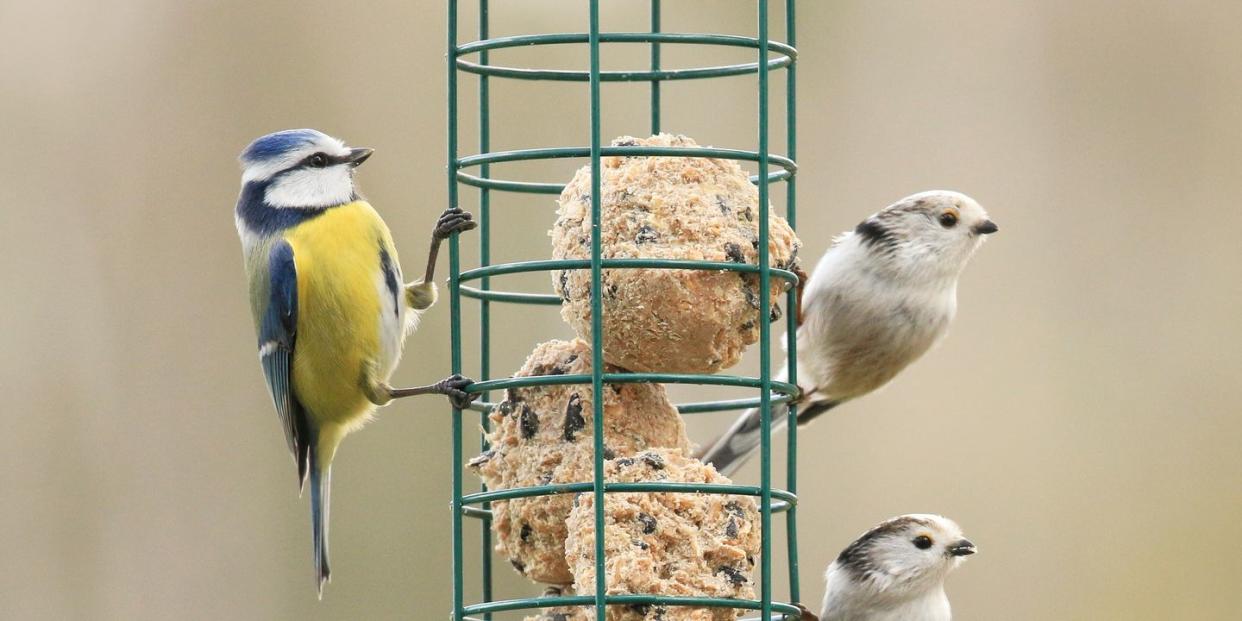HEre's How to Attract Birds to Your Garden in Winter

No chance of heading for a milder climate this winter? You’re not alone! Many neighborhood birds stay behind to spend the winter with you. Feeding the birds will help them survive when it’s super cold and snowy or when food supplies are scarce. It’s also fun to see who shows up every day! And don’t worry: Feeding your birds won’t keep them from migrating. Seasonal changes in day length—not an easy meal—determine when they leave.
Here’s how to get the most birds to visit your garden with tips from the National Audubon Society and Cornell University’s Ornithology Lab:
Set feeders at different heights.
Different kinds of birds like to feed in different places: on the ground, in shrubs, or on trees. Placing your feeders at different levels mimics this effect and will attract more species. Use a pole-mounted feeder or shepherd’s crook if you don’t have a tree limb to hang the feeder on.
Place your feeders strategically.
Birds don’t like feeling like they’re out in the open, exposed to predators such as hawks. Place feeders near shrubs so they can take shelter if they feel threatened. And reduce the risk of window collisions by placing feeders less than three feet or more than 30 feet away from windows—or apply multiple window decals or reflective tape to windows so birds aren’t confused by the reflections.

Supply a variety of seeds.
Various species of birds prefer different kinds of seeds. Black-oil sunflower appeals to most birds, but offering a variety, such as thistle and peanuts in separate feeders, will welcome everyone. Store your seed in a cool, dry spot in a metal container to protect it from rodents.

Offer a suet feeder.
Suet (beef fat) attracts the cute little insect-eaters such as woodpeckers, wrens and nuthatches. Place in plastic-coated suet cages, not net bags, which may cause birds to get entangled. Or mix one part peanut butter and five parts cornmeal, then stuff into the crevices of a large pine cone and hang from a branch.
Prepare for squirrels.
These wily little critters will hear the dinner bell almost as soon as you put your feeders out. While some people find them cute, they’re actually pretty destructive and will chew through feeders. Keep feeders at least 10 feet from branches and rooflines to prevent squirrels from leaping on them. Also, a cone-shaped metal baffle of at least 17 inches in diameter can be placed below a pole-mounted feeder. Alternately, try safflower or thistle seeds, which squirrels don’t particularly like.

Send out an invitation.
It can take just a few hours or up to a couple of weeks for birds to find your feeders. If it seems like no one’s visiting, try sprinkling seeds on the top of your feeders or on nearby bare ground. They’ll soon spot the buffet!
Keep feeders clean.
Before refilling, empty uneaten seed, which can grow bacteria and mold that can be deadly to birds. Twice a year, scrub the insides with a bottle brush and dish soap, rinse, and let air dry.

Give them a drink.
Set out a plastic pedestal-style birdbath near protective shrubs, and refill often; avoid ceramic baths, which can crack. In cold climates, birdbath heaters prevent the water from freezing so birds can drink and bathe. Yes, some species like to splash around even when it’s frigid out!
Get to know your visitors.
Part of the fun of backyard feeding is discovering who’s come to call. Check out free bird ID apps such as Audubon Bird Guide or Merlin Bird ID to learn more about the birds who visit.
Don’t quit.
Next spring, it’s just as enjoyable to see what migrating birds will use your feeders throughout the change of seasons. So, keep filling your feeders year-round!
You Might Also Like
